Nosing around Brooklyn: about André Cepeda’s exhibition RASGO
After his time at the RU – Residency Unlimited, New York, in the spring of 2016 (in partnership with Atelier- Museu Júlio Pomar / EGEAC), and with his show at the MNAC still fresh in our memories, RASGO opens a new phase in the work of André Cepeda. Confronted with the documentary aim of the show in Chiado, the images now being presented at Cristina Guerra Contemporary Art are more abstract and less narrative. Cepeda dedicated three years of his life to Depois, a project with the intention of offering a personal perspective of his own city, Porto. On the contrary, this new project RASGO has no predi ned intention. It is a freer project. Cepeda’s lack of familiarity with New York made it possible to prioritize the processes of image construction and composition. He quickly understood that his mission in New York was not to explore the city’s iconic and re ned image, but rather to elaborate his own experience, like a wild animal prowling and nosing around the city, furtively exploring the streets as he passes by.
In the beginning, his work process was rather focused in walking the streets and visiting museums. Cepeda was in no hurry to use his camera. He just explored her, the city of Manhattan, along with other peripheral neighborhoods in Brooklyn and Queens — not very far from the Residency and his apartment — such as Red Hook, Bushwick, and Ridgewood. Red Hook is a harbor area that knew better days after the great war. The other ones are industrial areas, a bit further north that, despite their rampant gentri cation, still manage to preserve a certain popular and working class environment, aspect which immediately caught the artist’s attention.
Cepeda found what he was looking for in avenues like Metropolitan or Grant, radically different from the souvenir image of 5th Avenue. First, he stumbled over trash, potholes, obstacles, warehouses, dirt and debris — typical of an area where trucks drive through constantly, transporting millions of tons of goods and merchandise produced, consumed, and distributed in New York. Here Cepeda discovered materials, shapes, colours and a special light; all these elements being very similar to the ones he found in the works of the most important American artists — the abstract expressionists, the minimalists, and the conceptual artists — in his visits to museums and art galleries. This coincidence should not be surprising; after all, the art historian T. J. Clark wrote that North-American art has the capacity to become more intense and interesting when it explores the vulgar, the prosaic, and the quotidian.
This awareness of US art roots determined Cepeda’s direction into an abstract approach. Instead of telling stories or documenting social realities, he understood that his mission was to capture, from a very basic level, almost instinctive, fragments of a way of life, very different from his own. He had to break through from what he already knew, opening a new phase in his investigation of the medium of photography: how is an image constructed? What can I photograph? The residency was de nitely the ideal context to have a deep re ection about his work: a space to think about what he had already done and what he wanted to do next.
In New York City, Cepeda was fascinated by the roughness of his surroundings. From this exhibtion, a good example of this quality is one of the photographs of a white laminated wood panel whose surface has cracked and is starting to peel off. The details on each piece that make up the laminate panel remind us of brushstrokes, like in an abstract painting; perhaps one of Robert Ryman’s famous monochromes. As in most Cepeda’s photographs, in this speci c one the light is warm and full; typical of spring and summer solstice. Actually, usually this kind of light that re ects and bounces from buildings has softer and duller colours, like browns and grays.
One key aspect of André Cepeda’s new body of work is its dominant verticallity, allusive to New York City. There is no horizon, no landscape, no nature: only objects and abstraction. New York is an «abstract», intellectual city. Driven by capital, nance, and technology, rationallly planned, yet overwhelmed by chaos, desire and ambition. When Cepeda describes his shooting experience he refers to his perception of the city as “lines and compositional equilibrium”, formal elements we can nd in minimalist painting and sculpture. Seeing these photographs one cannot help but to think of Manhattan’s streets orthogonality, broken diagonally with Broadway, an element of disequilibrium and dynamism, of life and surprise.
Another aspect of an abstract approach to photography is a result in seriality: pieces are generally comprised in sequences, with a cinematic character that helps understanding a “natural” facet of the city as a condition of a living organism, transient and in constant transformation. The sequence of photographs installed at a lower level on the rst room’s gallery wall, can be seen as a subtle parody of the imposing of ce towers on the island, alluding to the dialectic between verticality and horizontality, gaze and body, culture and nature.
Repetition plays an important role in this monumental series dedicated to an insigni cant crack in the road. Through this road we can guess the presence of soil under the asphalt. The three series presented (six large-scale images; three large-scale images and eight small-scale images), are composed by singular and unique photos, limited to a basic shot — such as the outleft smallscale image of a steel cylinder. This strong relation with the ground and gravity in this new body of work, can be explained as an act of “de-sublimation”, in which the artist renounces an idea of conventional and normative beauty.
Therefore, we must discuss the materiality of these photographs. For instances, in the series of three large- scale abstract photographs where we can perceive large swatches of yellow colour dulled by too much sun, Cepeda printed them on a particularly light Japanese paper, emphasizing its immateriality and weightlessness, the effect created by too much exposure to summer light. Paradoxically, these yellow swatches represented in these images are, in reality, large and heavy steel road plates, found at many intersections in New York, rumbling loudly whenever a cab passes over them at full speed.
Even though Depois and RASGO are different projects, they share a common element: the representation of an abstract perspective of the city, instead of an obvious one; the latter project being André Cepeda’s subjective vision of NYC. Cepeda believes that photography is invariably about showing “how the artist sees, how he frames reality”. In RASGO, we are offered a low point of view and a perspective of the city like the one of a street dog or coyote. In this sense, one can understand a certain performative intention in this photographic experience: an attempt to dialectically in uence the reality that is being represented. With no human gures, it is the presence of the photographer and his peculiar interaction with the space that “humanizes” the latter. Or should we say, that “animalizes” it? The title, RASGO, suggests a violent and aggressive action (tear, rip), con rming this impression.
Finally, this exhibition is another step in André Cepeda’s career: an investigation on “installed” photography and its possibilities. He started testing it in June, in his show at Fridman Gallery, in New York, repeatting the experiment for this new project at Cristina Guerra Contemporary Art. Like a small and brilliant skyscraper, the enigmatic paper cylinder rede nes the space of the rst room. This ‘photographic sculpture’ is a fundamental piece in the show as it tells us about the relationship between the image and its corporeality and materiality. Essentially, this is the subject that uni es all these images and, ultimately André Cepeda’s experience in New York: a search for the “real,” for a human scale, in a context of arti ce, simulation and spectacle, as it was described by Jean Baudrillard in his bookAmerica (1986).
Pedro de Llano, 2017
ANDRÉ CEPEDA
RASGO
O P E N I N G 12 JAN. 10 pm
12 JANUARY - 08 MARCH 2017
Nosing around Brooklyn: about André Cepeda’s exhibition RASGO by Pedro Llano
At the moment André Cepeda has a solo show curated by Urs Stahel, at MAAT - Museum of Art, Architecture and Technology in Lisbon, until January 2021
His last book published by Pierre Von Kleist Editions, can be ordered here
Solo exhibition at Cristina Guerra Contemporary Art in 2021
Developing a new project for Rialto6 to be presented in September 2021
André Cepeda was born in Coimbra, in 1976. He currently lives and works in Lisbon, Portugal. In 2012, artist in residence at the FAAP, São Paulo, as the recipient of a scholarship granted by the Calouste Gulbenkian Foundation. Cepeda was shortlisted for the Paul Huf Award, Foam Fotografiemuseum, Amsterdam (2011); Prémio BESPhoto, Lisbon (2010); and the EDP Foundation New Artists Prize, Lisbon (2007). He has been showing his work regularly, in Portugal and abroad, since 1999. He has since then made multiple artist residencies and received many commissions, among which stand out the 2010 Lisbon Architecture Triennale, EDP Foundation (2014), the Fundação de Serralves (2014) and Gulbenkian Foundation (2019). In 2016 he was artist in residency at the Residency Unlimited, in Brooklyn NY, in the context of the partnership Atelier-Museu Júlio Pomar/ EGEAC and Residency Unlimited, NY. He is currently working in a new exhibition and book project with Urs Stahel, to be presented in 2020.
Among his many exhibitions stand out: Cristina Guerra Contemporary Art, Lisbon; Benrubi Gallery, NY; Fridman Gallery, NY; Galeria Pedro Oliveira, Oporto; MNAC – Museu Nacional de Arte Contemporânea, Lisbon; Kasseler Fotoforum, Kassel; Gallery INVALIDEN, Berlin; Espace Photographique Contretype, Brussels; Standard/Deluxe, Lausanne, Switzerland; MARCO — Museo de Arte Contemporánea de Vigo; Le Bal, Paris, France; Haus der Photographie, Hamburg; Wohnungsfrage — Haus der Kulturen der Welt, Berlin; Serralves Contemporary Art Museum, Oporto; CGAC—Centro Galego de Arte Contemporánea, Santiago de Compostela; Calouste Gulbenkian Foundation, Paris; Museu Oscar Niemeyer, a Caixa Cultural, Rio de Janeiro and MASP — Museu de Arte de São Paulo, Brazil.
His work is represented in multiple public and private collections.
André Cepeda founded Blues Photography Studio in 2005 where he produces work for many photographers, instituitions and gallery’s, printing, scanning and photographing. www.blues.com.pt. Since 2008 he runs Inc. Livros e edições de autor, a bookshop specialized in artist books. www.inc-livros.pt. André Cepeda gives a one week workshop every year at the Photography School CEPV, Vevey, Switzerland.
André Cepeda is represented by Cristina Guerra Contemporary Art, Lisbon, Galeria Pedro Oliveira, Oporto and Benrubi Gallery, NY.
Grants/Residencies/Commissions:
2019
Gulbenkian Foundation
2018
Representação Oficial Portuguesa na 16ª Exposição Internacional de Arquitetura – La Biennale di Venezia
EDP Foundation
2016
ATELIER-MUSEU JÚLIO POMAR/ EGEAC E RESIDENCY UNLIMITED, NY
2014
Serralves Museum of Contemporary Art, Porto: work commissioned for the exhibition The SAAL Process: Architecture and Participation, 1974-1976
European Photo Exhibition Award, EPEA02
Ordem dos Arquitectos, Lisbon
2013
Offline Residence (Xerem Associação Cultural), Lisbon
National Museum of Ancient Art, Lisbon
Artist-in-residence, Fundação EDP – Electricity Museum, Lisbon
2012
Calouste Gulbenkian Foundation, Lisbon
Artist-in-residence, FAAP, Sao Paulo, Brazil
2011
Nominated for the Paul Huf Award, Foam Fotografiemuseum Amsterdam, Holland
Ordem dos Arquitectos, Lisbon
Calouste Gulbenkian Foundation, Lisbon
2010
Lisbon Architecture Triennal, Lisbon
BESPhoto Photography Prize, Lisbon
Champalimaud Foundation, Lisbon
2009
Reitoria da Universidade do Porto, Porto
2007
EDP Prize – New Artists
IEFP, Ministério do trabalho, Testemunhos – Iniciativa Novas Oportunidades
2006
RAR Holding, Porto
2003/2004
Artist-in residence, António Henriques Galeria de Arte Contemporânea, Viseu
2002
Centro Nacional de Cultura, Lisbon
2001
Museu da Imagem, Encontros de Imagem, Braga
2000
Portuguese Center of Photography, Porto
1999/2000
Artist-in-residence, Espace Photographique Contretype, Brussels, Belgium
Solo exhibitions:
2017
Depois, Benrubi Gallery, New York
Cão, Galeria Pedro Oliveira, Porto
Uma especie de silêncio, CAAA, Guimarães
Rasgo, Cristina Guerra Contemporary Art, Lisbon, 2017
2016
At the eyes ground, Fridman Gallery, New York, 2016
Depois, MNAC – Museu Nacional de Arte Contemporânea, Lisbon
2015
Untitled, Old School, Lisbon a project by Susana Pomba
Rien, Kasseler Fotoforum, Kassel, Germany
2014
Rien, Centro Cultural Vila Flor, Guimaraes
Kanal, Standard Delux, Lausanne, Switzerland
Rien, Câmara Escura, Torres Vedras
2013
Explicação da Lâmpada, Galeria Pedro Oliveira, Porto
Sob um sol recto, Galeria Pedro Cera, Lisbon
2012
Rien, Galeria Pedro Cera, Lisbon
Rien, Museu do Neo-Realismo, Vila Franca de Xira
Ontem, Galery INVALIDEN1, Berlin, Germany
Canal, with Eduardo Matos, Espace Photographique Contretype, Brussels, Belgium
2011
CAV-Centro de Artes Visuais, Coimbra
2010
O que o futuro foi, Mostra de Vídeo, Laboratório das Artes, Guimaraes
Untitled, Galeria Pedro Oliveira, Porto
Ontem, Espace Photographique Contretype, Brussels, Belgium
BESPhoto Photography Prize, Museum Berardo, CCB, Lisbon
2009
River, Galeria Pedro Cera, Lisbon; Galería AdHoc, Vigo, Spain
Untitled, The Mews – Project Space, London, UK
Project Room, Galeria Reflexus, Porto
2008
Sem título, Mad Woman in the Attic, Porto
Ontem, ZDB Gallery, Lisbon
2006
Stasis, Galeria Pedro Cera, Lisbon
Provas de Trabalho, Projecto Apêndice, Porto
Moving#3, IN.TRANSIT, Edificio Artes em Partes, Porto
Moving#2, Galeria AdHoc, Vigo, Spain
Moving, Cinematic Art Gallery, Vila do Conde
Anacronia, KGaleria, Lisbon
2005
Anacronia, Museu de Imagem, Braga
Anacronia, Espace Photographique Contretype, Brussels, Belgium
Jungle, Espaço Bartolomeu 5, Lisbon
2004
Viseu, António Henriques Galeria de Arte Contemporânea, Viseu
Closer, Galeria +Consigo, Coimbra
2003
Mapa de Intensidades, Oficina, Galeria Fernando Santos, Porto
2002
Anacronia, Gallerie Image, Aarhus, Denmark
Corpo, tempo, desejo e morte, Galeria Massa, Porto e Vulcão dos Capelinhos, Azores
2001
Pontes, lugares e antropologia, Silo-espaço cultural, Portuguese Center of Photography, Porto
2000
Anacronia, Encontros de Fotografia de Coimbra, Coimbra
Group exhibitions:
2018
Before and After Architecture, Chicago Architecture Biennial, with Nuno Brandão Costa, Chicago
Public without rhetoric, Representação Oficial Portuguesa na 16ª Exposição Internacional de Arquitetura – La Biennale di Venezia, Veneza
Variations Portugaises, Abbaye St. André – Centre de Art Contemporain Meymac
Escala 1:1. 21 Artistas Contemporâneos Portugueses, Tabacalera, Madrid
A preto&branco, Sociedade Nacional de Belas Artes, Lisboa
Rhytm of Distances: Prposition for the repletion, Galeria Vertical/Silo Auto, Porto
2017
Uma Colecção = Um Museu, MACE – Museu de Arte Contemporânea de Elvas, Elvas
Them or us, Galeria Municipal do Porto, Porto
Un certain regard, Obras da Colecção Norlinda e José Lima, CAV, Coimbra
Da fuga e do encontro: Inversão do Olhar – Espaço Novo Banco; Lisboa
2015
Edita: secuencia/sentido, CGAC-Centro Galego de Arte Contemporánea, Santiago de Compostela, Galicia
The New Social, European Photo Exhibition Award, House of Photography at Deichtorhallen Hamburg, Germany
The SAAL Process: Architecture and Participation, 1974-1976, CCA – Canadian Centre for Architecture, Montreal, Canada (cur. Delfim Sardo and Susan Cotter)
International Fotobook Festival, Kassel, Germany
Calouste Gulbenkian Foundation, Paris, France (cur. Miguel von Hafe Pérez)
2014
The SAAL Process: Architecture and Participation, 1974-1976, Serralves Museum of Contemporary Art, Porto (cur. Delfim Sardo and Susan Cotter)
The New Social, European Photo Exhibition Award, Calouste Gulbenkian Foundation, Paris, France
Le Bal Books Week-end, Le Bal, Paris, France
The New Social, European Photo Exhibition Award, Fondazione Banca del Monte di Lucca, Lucca, Italy; Calouste Gulbenkian Foundatio 02, Paris, France
Nobel Peace Centre, Radhusplassen, Oslo, Sweden (cur. Sérgio Mah)
SUB 40’, Galeria Municipal Almeida Garrett, Porto
Brussels Unlimited - Collection Contretype, Espace Contretype, Brussels, Belgium
Revisitação, Galeria Pedro Oliveira, Porto
Roubaram a partitura, no vazio seguimos, Jardins Efémeros, Viseu (cur. Miguel von Hafe Pérez)
Lei de Ohm, Museu da Electricidade, Lisbon (cur. Filipa Valladares)
Muralhar: Artistas POrtugueses Contemporâneos, Oi Futuro, Rio de Janeiro, Brazil (cur. Delfim Sardo)
The New Social, European Photo Exhibition Award, The Nobel Peace Center, Oslo
2013
Biennial of Photography MASP/Pirelli, MASP, São Paulo (cur. Ricardo Resende)
Visões do Desterro, Caixa Cultural do Rio de Janeiro, Brazil
A Arca Invisível, National Museum of Ancient Art, Lisbon (cur. Delfim Sardo)
Noise, Pedras & Pêssegos, Porto
2012
Buildings and Remnants, Fábrica ASA, Guimaraes European Capital of Culture, Guimaraes (cur. Inês Moreira and Agneta Szylak)
Materiality, Alternativa 12, Wypsa Institute of Art, Gdansk, Poland (cur. Inês Moreira and Agneta Szylak)
New/Old Life, Galery Blanca Berlin, Madrid, Spain
2011
Wherever I Lay My Camera Down is Home, Photographic Festival in Rome, Rome, Italy (cur. Paul Wombel)
Ontem, Encontros de imagem de Braga
Arte Lusófona Contemporânea, Galeria Marta Traba – Fundação Memorial da América Latina, Sao Paulo, Brazil
Panis et Circensis, Centro de Artes de Sines, Sines (cur. Filipa Valladares)
Da outra margem do Atlântico – videoarte e fotografia portuguesa, Centro de Artes Helio Oiticica, Rio de Janeiro, Brazil (cur. Paulo Reis and David Barro)
Private Lives, Centro Cultural de Cascais, Cascais
Da Cartografia do Poder aos Itinerários do Saber, Museu Nacional-Universidade Federal do Rio de Janeiro, Brazil, and Faculdade de Ciências e Tecnologias da Universidade de Coimbra
2010
Ré-collection, Espace Photographique Contretype, Brussels, Belgium (cur. Jean-Louis Godefroid
Impresiones Y comentários – Fotografia Contemporánea Portuguesa, Fundació Foto Colectania, Barcelona, Spain (cur. João Fernandes)
2009
A iminência da queda, Galeria Diário de Notícias, Lisbon
Rescaldo e Ressonância, Reitoria da Universidade do Porto, Porto (cur. Inês Moreira)
Está a morrer e não quer ver, Espaço Campanhã, Porto (cur. José Maia)
2008
The Core of Industry – European Photography, Reggio Emilia 2008 – Musei Civici di Reggio Emilia, Spazio Gerra, Reggio Emilia, Italy
Testemunhos – Trajectos de Qualificação, Edifício da Alfândega, Porto (cur. Sérgio Mah)
Paraísos Indómitos, Marco Museu de Arte Contemporáneo de Vigo, Spain (cur. Virginia Torrente)
Territoire, 6ª Biennale Internacional de Fotografia de Liége, Liége, Belgium
Where are you from? Portuguese Contemporary Art, Faulconer Gallery, Grinnell College, Grinnell, Iowa, USA (cur. Lesley Wright)
2007
EDP Prize – New Artists, Central Eléctrica do Freixo, Porto
Antimonumentos, António Henriques Galeria de Arte contemporânea, Viseu (cur. Miguel von Hafe Pérez)
Deslocações: 4 perspectivas contemporâneas portuguesas, Comité Económico e Social Europeu, Brussels, Belgium (cur. Lúcia Marques)
PhotoLondon 2007, Galeria AdHoc, London, UK
Intro, Espace Photographique Contretype, Brussels, Belgium
Bxl, Centre Wallonie-Bruxelles à Paris, Paris, France
2006
Busca-Pólos, Centro Cultural Vila Flor, Guimaraes and Pavilhão de Portugal, Coimbra
Residências I, Museu do Caramulo, Caramulo
Encontro de Arte Jovem, Bienal de Arte, Chaves
CO2, Miedzynarodowe Centrum Kultury, Krakow, Poland
2005
Colecção da Fundação PLMJ, Centro de Artes Visuais, Coimbra (cur. Miguel Amado)
Creators of European Photography, Photo Festival Union, Lodz, Poland
Desenhar Discurso: Digressões sobre uma urbanidade disruptiva, XIII Bienal de Cerveira, Vila Nova de Cerveira (cur. Miguel von Hafe Pérez)
2004
Re-produtores de sentido, Arte Sesc, Rio de Janeiro, Brazil (cur. Miguel von Hafe Pérez)
E no princípio era a viagem, Bienal de Pontevedra, Pontevedra, Spain (cur. Miguel von Hafe Pérez)
2003
Et puis... voilá, António Henriques Galeria de Arte Contemporânea, Viseu
Colecção de Arte Contemporânea da Caixa Geral de Depósitos, Museu Extremeño e Iberoamericano de Arte Contemporânea, Badajoz, Spain
Pingyao International Photography Festival, Pingyao, China
Salão Europeu de Jovens Criadores, Montrouge/Sant Cugat/Amarante
2002
Galeria Fernando Pradilla, Madrid
Pontes, lugares e antropologia, Cadeia da Relação, Portuguese Center of Photography, Oporto
2001
Memórias da Cidade, Encontros de Imagem, Braga
2000
Bruxelles Active, C02, Brussels, Belgium (cur. Jean-Louis Godefroid)
Bruxelles a l’infini, Espace Photographique Contretype, Brussels, Belgium (cur. Jean-Louis Goderfroid)
Collections:
Fundação de Serralves – Museum of Contemporaray Art, Porto
CGAC – Centro Galego de Arte Contemporânea, Santiago de Compostela, Spain
MNAC – Museu Nacional de Arte Contemporânea, Lisboa
Colecção António Cachola, Elvas
Museu de Arte do rio, Rio de Janeiro, Brasil
Espace Photographique Contretype, Brussels, Belgium
Faulconer Gallery, Grinnell, Iowa, USA
Instituto Camões, Foreign Affairs Ministery, Lisbon
National Photography Collection, Ministery of Culture, Porto
Encontros de Fotografia de Coimbra, Coimbra
Museu da Imagem/Encontros de Imagem, Braga
Culturgest-Caixa Geral de Depósitos, Lisbon
PLMJ Sociedade de Advogados, Lisbon
Museu do Caramulo, Caramulo
Câmara Municipal de Chaves, Chaves
Banco Espírito Santo, Lisbon
Ilídio Pinho Foundation, Oporto
Amorim Turismo, Troia
RAR Holding, Porto
ZdB Collection, Lisbon
Mica, Vigo, Spain
Books:
RDHK, self published, NY, 2016
Depois, MNAC/Pierre von Kleist Editions, Lisbon, 2016
Rua Stan Getz, Pierre von Kleist Editions, Lisbon, 2015
Rien – text book, CCVF, Guimarães, 2014
Whispering Light, self published, 2013
Kanal, Edition Contretype, Brussels, 2012
Rien, Pierre von Kleist Editions, Lisbon, 2012
Ontem, Cahier Blue, Brussels, 2010
River, self published, 2009
Anacronia, Edition Contretype, Brussels, 2005
Discography:
River, Lp, 50 copies
Kanal, Lp, 25 copies
Electricity, single, 150 copies
Filmography:
casal, 16mm, color, 1'25''
bandeiras, 16mm, color, 2’30’’
rien, 16mm, color, 3’15’’
 Books2020Ballad of Today
Books2020Ballad of Today Exhibitions2020Exhibition view Ballad of Today
Exhibitions2020Exhibition view Ballad of Today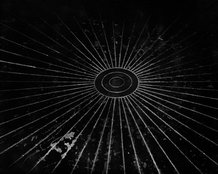 Texts2018Donald Kuspit - ARTFORUM
Texts2018Donald Kuspit - ARTFORUM Texts2018Ricardo Nicolau, Galeria Pedro Oliveira
Texts2018Ricardo Nicolau, Galeria Pedro Oliveira
 Texts2018Claudio Zecchi, CÃO – André Cepeda
Texts2018Claudio Zecchi, CÃO – André Cepeda
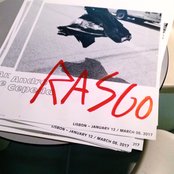 Exhibitions2017Rasgo, Cristina Guerra Contemporary Art Gallery
Exhibitions2017Rasgo, Cristina Guerra Contemporary Art Gallery
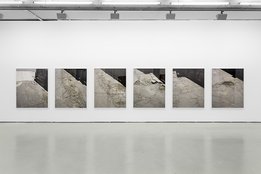 Texts2017Texto Pedro Llano
Texts2017Texto Pedro Llano 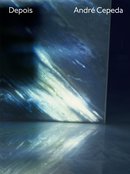 Books2016Depois
Books2016Depois  Texts2016At the base of vision text by Sérgio Mah
Texts2016At the base of vision text by Sérgio Mah Texts2016A History of Ruins and Ghosts by António Guerreiro
Texts2016A History of Ruins and Ghosts by António Guerreiro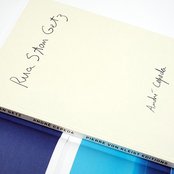 Books2015Rua Stan Getz
Books2015Rua Stan Getz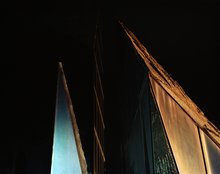 Work2015Depois
Work2015Depois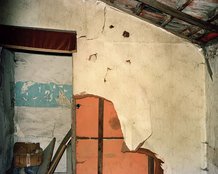 Texts2015Fade by Sérgio Mah
Texts2015Fade by Sérgio Mah Projects2014Untitled, Porto, 2014, 16 mm film, colour, 1’10’’
Projects2014Untitled, Porto, 2014, 16 mm film, colour, 1’10’’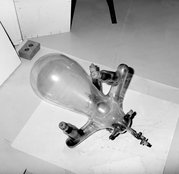 Projects2014Single, Mineral/Electricidade
Projects2014Single, Mineral/Electricidade Work2014Rua Stan Getz
Work2014Rua Stan Getz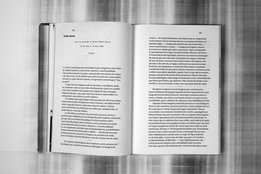 Texts2014Nothing by Delfim Sardo
Texts2014Nothing by Delfim Sardo Texts2014Say Nothing by Phillippe Azoury
Texts2014Say Nothing by Phillippe Azoury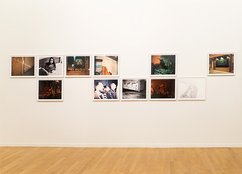 Projects2014Fade
Projects2014Fade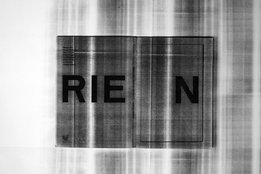 Books2014Rien Text Book
Books2014Rien Text Book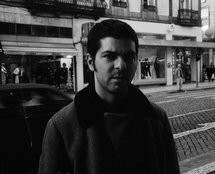 Projects2014Interview with Anna Meschiari (in French)
Projects2014Interview with Anna Meschiari (in French) Projects2014Exhibition views, Centro Cultural Vila Flor
Projects2014Exhibition views, Centro Cultural Vila Flor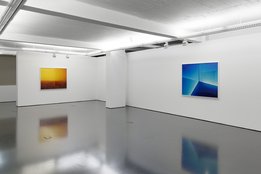 Projects2013Exhibition view, Galeria Pedro Cera
Projects2013Exhibition view, Galeria Pedro Cera Books2013Whispering Light/ Luz Sussurrada
Books2013Whispering Light/ Luz Sussurrada Texts2013Rien by Nuno Crespo
Texts2013Rien by Nuno Crespo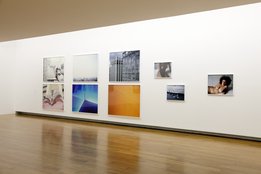 Texts2013Líneas abstractas by David Barro
Texts2013Líneas abstractas by David Barro 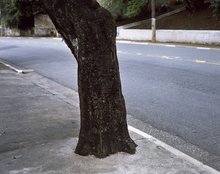 Texts2013São Paulo em corte by Agnaldo Farias
Texts2013São Paulo em corte by Agnaldo Farias Projects2013Lapa do Lobo
Projects2013Lapa do Lobo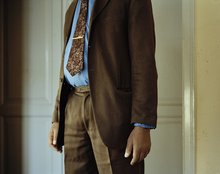 Projects2013Intendente
Projects2013Intendente Projects2013Super8 - HHY & The Macumbas, "Isaac, The Throat"
Projects2013Super8 - HHY & The Macumbas, "Isaac, The Throat" 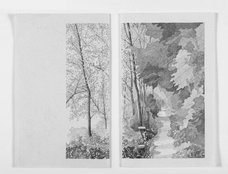 Books2012Canal
Books2012Canal Books2012Rien
Books2012Rien Projects2012Bandeiras, 2011, 16 mm film, colour, 1’10’’
Projects2012Bandeiras, 2011, 16 mm film, colour, 1’10’’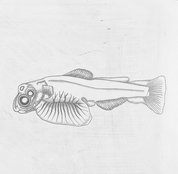 Projects2012LP - L'Histoire de La Croquette
Projects2012LP - L'Histoire de La Croquette Texts2012Rien by Rémi Coignet
Texts2012Rien by Rémi Coignet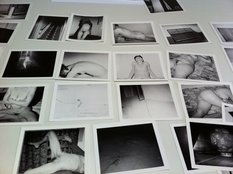 Work2012Rien
Work2012Rien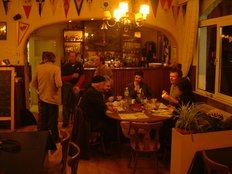 Projects2012Entrevista para abitpixel (in portuguese)
Projects2012Entrevista para abitpixel (in portuguese) Texts2012rien – nier - rein by Regina Guimarães
Texts2012rien – nier - rein by Regina Guimarães Projects2010Couple, Porto, 2009, 16 mm film, colour, 1’25’’
Projects2010Couple, Porto, 2009, 16 mm film, colour, 1’25’’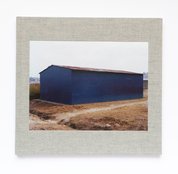 Books2010Ontem
Books2010Ontem Texts2010Intuited breathing by Miguel von Hafe Pérez
Texts2010Intuited breathing by Miguel von Hafe Pérez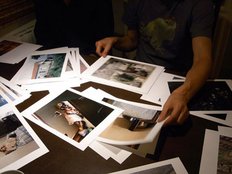 Texts2010Interview with Jean-Louis Godefroid
Texts2010Interview with Jean-Louis Godefroid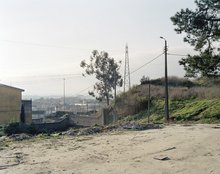 Work2010Ontem
Work2010Ontem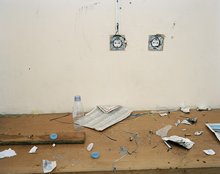 Texts2010Ontem to Foam Magazine by Sebastian Arthur Hau
Texts2010Ontem to Foam Magazine by Sebastian Arthur Hau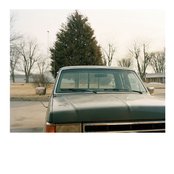 Projects2009LP River
Projects2009LP River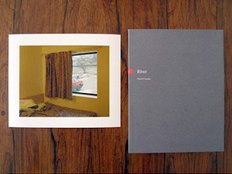 Books2009River
Books2009River Projects2008Exhibition views, Galeria ZdB
Projects2008Exhibition views, Galeria ZdB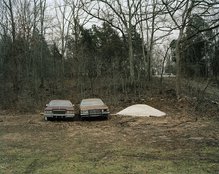 Projects2008River
Projects2008River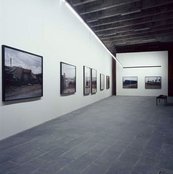 Texts2007what does the word ‘landscape’(...) by Delfim Sardo
Texts2007what does the word ‘landscape’(...) by Delfim Sardo Texts2006Moving by Johan Vonck
Texts2006Moving by Johan Vonck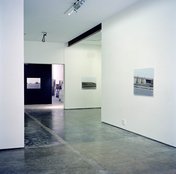 Texts2006Sleepwalking Images by Miguel von Hafe Pérez
Texts2006Sleepwalking Images by Miguel von Hafe Pérez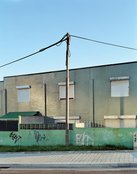 Projects2006Moving
Projects2006Moving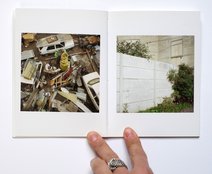 Books2005Anacronia
Books2005Anacronia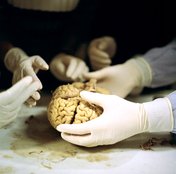 Texts2003Anacronia by Frits Gierstberg
Texts2003Anacronia by Frits Gierstberg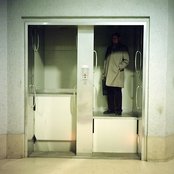 Texts2000Anacronia by Jean-Louis Godefroid
Texts2000Anacronia by Jean-Louis Godefroid Projects2000Anacronia
Projects2000Anacronia